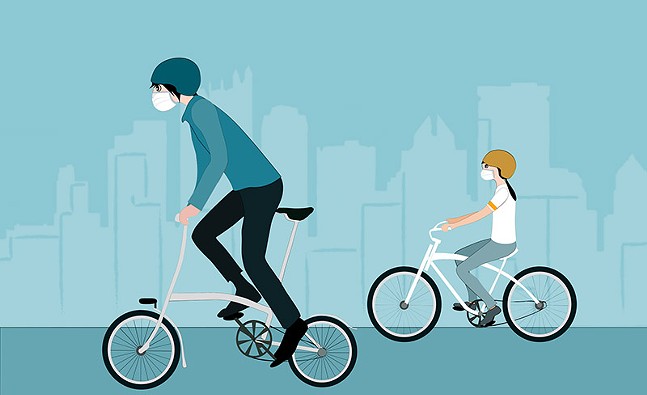Commuting is one of the many daily habits Americans have had to adjust over the past few months because of the coronavirus pandemic. More people are working from home, driving less, and figuring out the best way to get around safely during the pandemic.
One of the traveling modes that has been heralded among the safest is cycling. And Pittsburghers have been following suit, as data shows bike ridership from March to May has slightly increased.
According to Street Light Data, a San Francisco-based analytics firm focused on mobility, the Pittsburgh region has increased Bicycle Miles Traveled from March-May compared to the same time period last year.
During March of this year, Pittsburgh bicyclists rode between an additional 20-49% more than March of 2019. In April, BMT slightly dipped compared to the previous April; but then in May, Pittsburgh's Bike Miles Traveled increased again by between 1-19%, according to Street Light Data.
During the pandemic, Pittsburgh has implemented some local-traffic street closures so that cyclists, pedestrians, and those moving around without cars can have more space to recreate. Roads in Highland Park and near parks in the West End have been closed down to cars. Local bike shops, like Kraynick's in Garfield, have also been flooded with clients, with Pittsburghers wanting old and new bikes repaired and ready to ride.
Pittsburgh wasn’t alone in adding more BMT, and in some ways, was eclipsed by similar sized cities. Cleveland, Cincinnati, and St. Louis all saw larger increases in BMT compared to Pittsburgh.🚲 COVID-19 bike data is in! 🚲
— StreetLight Data (@StreetLightData) July 27, 2020
We all know COVID-19 has led to decreased VMT. But what about bicycle miles traveled? We crunched the numbers, and the results surprised us. Learn how we tracked these changes from home: https://t.co/A0Q09GHVN8 pic.twitter.com/AgwhgOgib0
But this may be due to more people riding recreationally due to coronavirus, not necessarily an increase in biking becoming more practical for commuting. For example, some cities with little to no regular bike commuters, like Ogden, Utah, Columbia, S.C., and Lakeland, Fla. saw massive increases in BMT compared to last year. Whereas cities that have large numbers of regular bike-commuters, like Portland, Ore. and Boston, actually saw decreases in BMT compared to last year.
Either way, Street Light Data says these market increases in bike riding can be a boost to city planners and bike advocates. The group hopes the data can further efforts to create more safe and equitable streets for all road users.


